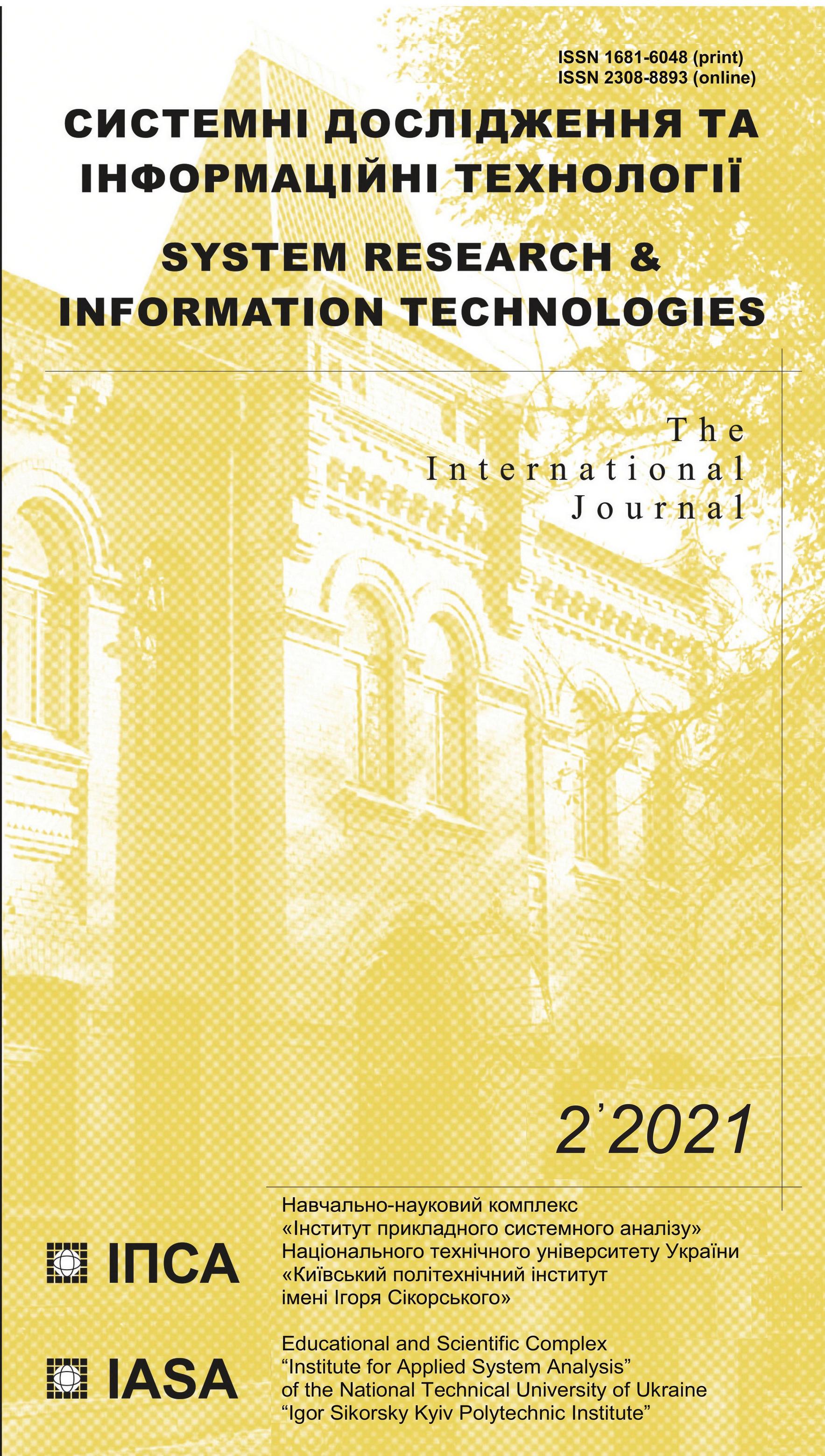Electric heater mathematical model for cyber-physical systems
DOI:
https://doi.org/10.20535/SRIT.2308-8893.2021.2.01Keywords:
cyber-physical system, digital twin, mathematical model, state space, electric heaterAbstract
The article discusses the heat and mass transfer dynamic model for an electric heater with lumped parameters, which allows transient processes simulation for the main influences. The proposed model is recommended to be used in cyber-physical systems for forecasting and evaluating the effectiveness of control systems integrated into a single information management system. The developed model can be used by specialists for the analysis and synthesis of control systems for balanced ventilation systems or industrial air conditioners. As an example, a numerical simulation of transient processes along the action main channels for an electric heater HE 36/2 manufactured by VTS CLIMA was carried out. The significant advantage of the proposed model is the possibility for using it for the synthesis and analysis of multidimensional control systems.
References
K. Khaitan and J.D. McCalley, “Design Techniques and Applications of Cyber Physical Systems: A Survey”, IEEE Systems Journal, no. 9(2), pp. 1–16, 2014.
A. Shuravin and A. Moskovichenko, “What the digital twin can give us”, Control Engineering Russia, no. 3(87), pp. 13–15, 2020.
V.A. Minaev, A.V. Mazin, K.B. Zdiruk, and L.S. Kulikov, “Digital twins of plants in solving control problems”, Radio industry, no. 3, pp. 68–78, 2019.
V.K. Pyzhov and N.N. Smirnov, Air conditioning, ventilation and heating systems. Moscow-Vologda: Infra-Engineering, 2019, 528 p.
A.V. Veresov, “Electric heaters for mining and coal enterprises”, Coal, no. 4, pp. 9–11, 2011.
E.S. Bondar, A.S. Gordienko, V.A. Mikhailov, and G.V. Nimich, Automation of ventilation and air conditioning systems. Kiev: LLC “Publishing house “Avanpost–Prim”, 2005, 560 p.
V. Tkachov, G. Gruhler, A. Zaslavski, A. Bublikov, and S. Protsenko, “Development of the algorithm for the automated synchronization of energy consumption by electric heaters under condition of limited energy resource”, Eastern-European Journal of Enterprise Technologies, no. 2/8 (92), pp. 50–61, 2018.
V.V. Vychuzhanin, “Mathematical models of air treatment non-stationary modes in the central SLE”, Odessa National Maritime University Bulletin, Odessa: ONMU, no. 23, pp. 172–185, 2007.
I. Golinko and I. Galytska, “Mathematical Model of Heat Exchange for Non-stationary Mode of Water Heater”, ICCSEEA 2019: Advances in Computer Science for Engineering and Education II, pp. 58–67.
A.G. Sotnikov, Automation of air conditioning and ventilation systems. Leningrad: Mashinostroenie, 1984, 240 p.
V.N. Bogoslovsky, O.Ya. Kokorin, and L.V. Petrov, Air conditioning and cold supply. Moscow: Stroyizdat, 1985, 367 p.
I.M. Golinko and A.I. Kubrak, Modeling and optimization of control systems. Kamyanets–Podilsky: PE Buynytsky, 2012, 262 p.
E.M. Belova, Central air conditioning systems in buildings. Moscow: Euroclimate, 2006, 640 p.
E.V. Stefanov, Engineering systems of buildings. Ventilation and air conditioning. SPb.: AVOK North-West, 2005, 399 p.
Yu.S. Krasnov, A.P. Borisoglebskaya, and A.V. Antipov, Ventilation and air conditioning systems. Moscow: TermoKul, 2004, 373 p.
V.P. Isachenko, Heat transfer. Moscow: Energoizdat, 1981, 416 p.

